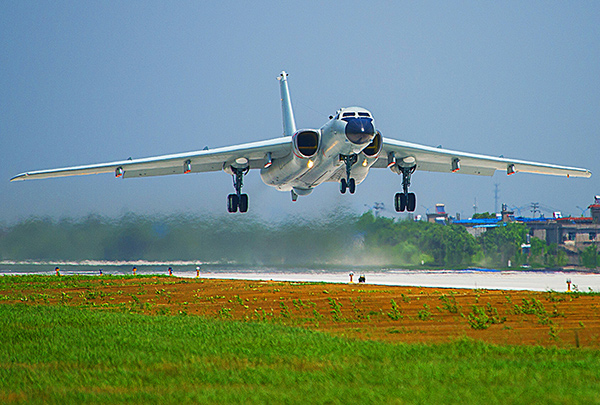 |
| 图片说明 |
That was the last wish of the dying Lieutenant General Liu Yudi, 92, a flying ace from the Korean War and a former senior officer of the People's Liberation Army air force.
Lying on his deathbed in the PLA Air Force General Hospital in Beijing, the legendary war hero used his last strength to write those words on a piece of paper and give it to General Ma Xiaotian, the air force commander who came to bid him farewell on Feb 16. Early the next morning, Liu died.
Whether Ma promised to fulfill Liu's wish is unknown, but a succession of recently emerging signs indicate that China has decided to develop a next-generation strategic bomber.
According to the latest issue of Kanwa Defense Review, a Canada-based publication specializing in defense affairs and weapons technology, a meeting held recently by the military defined the PLA air force as a "strategic force", a title previously monopolized by the PLA Second Artillery Corps, the country's de facto strategic missile force. Officers attending the meeting reportedly urged the PLA air force to prioritize the development of a long-range strategic bomber.
In Chinese aviation terminology, long-range strategic bomber refers to an aircraft capable of carrying more than 10 metric tons of air-to-ground weaponry and flying at least 8,000 km without refueling. Unlike tactical bombers and attack aircraft, which are used in air interdiction operations to attack enemy combatants and military equipment, strategic bombers are built to fly into enemy territory to destroy targets such as major military installations, arms factories and important cities.
Attendees at the meeting reached a consensus that the long-range strategic bomber is of great significance to the Chinese military because it will enable the air force to strike a second "island chain" to deny foreign military intervention in case of an emergency or conflict, the Kanwa report said.
PLA military theorists conceive of two island chains as forming a geographic basis for China's maritime defensive perimeter. The precise boundaries of these chains have never been officially defined, but by commonly accepted definitions, the first chain refers to a series of islands that stretch from Japan in the north to Taiwan and the Philippines to the south. The second chain runs from the north at the Bonin Islands and moves southward through the Marianas and the Caroline Islands.
Kanwa assumes that the design for the heavy bomber will soon unfold, after the completion of the Y-20 heavy airlifter, which is expected in one to two years.
Publicity officers at the PLA air force and Aviation Industry Corp of China, the country's leading aircraft manufacturer, could not be reached for comment.
